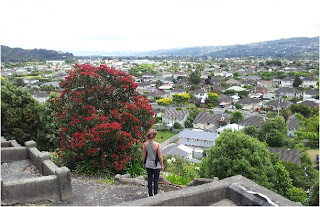As I write this I am staying on a yacht that is moored In the Napier Harbour. If you like vintage planes, old machinery, and 1950’s fashion, you would love Napier.
It is a small city on the East coast of the North Island of New Zealand and four hours from Wellington. It is slightly warmer than Wellington and more often sunny. It is a coastal city, bordered on two sides by the Pacific Ocean and the Harbour and overlooked by myriads of homes, built on the steep surrounding hills, many of them perched on stilts for stability.
It is a beautiful city and a popular place to take holidays and to retire. It is also a city built on tragedy.
On an ordinary Tuesday morning in February 1931, the city was rocked by an earthquake. If you have seen the Christchurch earthquake on TV, this was worse.
It lasted two and a half minutes; measured 7.8 on the Richter scale and killed 256 people. Many more were injured and almost all the buildings in town as well as in the nearby town of Hastings were destroyed. The Wellington Regional newspaper suggested that Napier had been “Wiped off the map.”
There were big changes to the surrounding areas too. Nearby coastal areas were lifted around two metres and about 40km of seabed, became dry land. This land is now the airport and the busy port area and shipping terminals.
 |
| The Port that used to be sea floor |
It was huge and changed the region significantly.
Over the next few years, most of the city had to be rebuilt, so even now, it has a distinct 1930’s feel. All the public buildings, the parks, even the garden layouts, were designed in the style of the day, Art Deco.
Napier honours that past with museums and displays and by holding a very popular Art Deco weekend every February. I was here last year and many women wore flowery dresses and cloche hats while their men looked dapper in their suits and boater type hats. In three weeks, I will tell you all about it.








